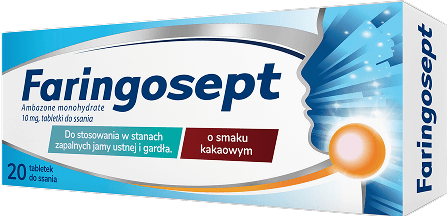
Respiratory tract diseases
RESPIRATORY TRACT DISEASES, ESPECIALLY DURING THE COLD SEASON
Categories of respiratory tract infections:
- upper respiratory tract infections: affect the nose, sinuses, and throat (pharynx, tonsils, larynx).
- lower respiratory tract infections: affect the airways and lungs.
There are two types of respiratory tract infections:

VIRAL INFECTIONS
- The most common sore throat is caused by a cold or flu
- Childhood diseases: rubeola (measles), varicella (chickenpox)
- Infectious mononucleosis
- Sars-Cov-2 (COVID-19) infection
- Last 5-7 days and can be treated locally symptomatically
BACTERIAL INFECTIONS
- The most commonly encountered bacteria are group A streptococcus, pneumococcus, Haemophilus influenzae and staphylococcus.
- Less common forms of sore throat
- Symptoms are more aggressive and can last for more than a week
- May require antibiotic treatment following an exudate test

immunocompetent children – 6-7 episodes/year(1
children with immunodeficiency – 12 episodes/year1
90% of cases – viral infections
60-70% – upper respiratory tract infections2,3
THE MOST COMMON UPPER RESPIRATORY TRACT (URT) DISEASES ARE THE VIRAL RESPIRATORY INFECTIONS.
Acute rhinopharyngitis4
It is an infectious inflammatory process of viral etiology, located in the nasopharyngeal mucosa. The inflammatory process is much more extensive in children than in adults, frequently affecting the paranasal sinuses and middle ear.
Acute rhinopharyngitis, also known as the common cold, is the most common childhood infection. The disease is of viral etiology, its primary agent being the rhinovirus.
Bacterial superinfection may occur during the course of the disease. The most common bacteria are group A streptococcus, pneumococcus, Haemophilus influenzae and staphylococcus.
The onset is sudden, with high fever (39-400C), preceding the onset of symptoms by a few hours: sneezing, runny nose, dryness, and irritation of the nasopharyngeal mucosa. Nasal discharge causes nasal obstruction, and becomes thick, purulent, usually after 1 day. Cough, headache, myalgia, anorexia, malaise, moderate fever may sometimes occur. The illness sometimes lasts up to 14 days, but its average duration is 7 days.
Acute pharyngitis5
All infections of the pharynx, including acute pharyngotonsillitis and tonsillitis, are included under this term. Pharyngeal involvement is a constant in most respiratory tract infections.
Faringita acută se referă la acele situații în care principalul sediu al infecției este faringele. Faringita acută este determinată în general de virusuri. Singurul agent etiologic bacterian responsabil în mod obișnuit de boală este streptococul β-hemolitic de grup A (aproximativ 30% din cazuri).
Viral pharyngitis generally has a progressive onset, with early fever, anorexia, moderate pharyngeal pain. Pharyngeal congestion occurs after approximately 1 day, reaching its peak on the 2nd and 3rd days. Rhinorrhoea, conjunctival hyperaemia, cough, and hoarseness are common symptoms. Inflammation of the pharynx may be mild or pronounced, with small superficial ulcerations on the soft palate and posterior wall of the pharynx. Sometimes exudate (yellowish-white deposits) occurs on the palatine tonsils and the posterior wall of the pharynx, indistinguishable from that of streptococcal infection. Laryngeal involvement may coexist. The duration of the disease varies between 2 and 5 days. There are no major complications. The most common respiratory viruses in acute viral pharyngitis, which is by far the most common, are adenoviruses, influenza viruses, coronaviruses, Coxsackie viruses, herpes simplex, Epstein-Barr virus (the aetiological agent of infectious mononucleosis), cytomegalovirus.
Vomiting (the association of vomiting is an important sign to suspect this aetiology), high fever (39-400C). Within a few hours of onset, the pharynx becomes red, accompanied by the presence of tonsil swelling and tonsillar exudate. Anterior cervical lymphadenitis occurs early and is painful. Fever lasts for 1-4 days. The illness lasts for 7-10 days.
Conjunctivitis, rhinorrhoea, cough, hoarseness (all present in viral pharyngitis), – the presence of 2 or more of these symptoms and signs suggest the viral etiology of pharyngitis.1
Acute tonsillitis5
Tonsillitis is an acute inflammation of the palatine tonsils, oval-shaped masses of lymphatic tissue located in the throat, on either side of the uvula, which play an important role in the secretion of antibodies involved in generating the body’s defensive immune response. The condition is common in pre-schoolers and preadolescent children, but it can also affect adults, the disease having an increased incidence particularly during the cold months of autumn and winter.
The evolution of tonsillitis is spontaneously favourable, regardless of the etiologic agent involved, with the majority of patients experiencing symptom remission within approximately 1 week from the onset.
Inflammation of the palatine tonsils is due in more than half of cases to respiratory infection with adenovirus, rhinovirus, influenza virus, respiratory syncytial virus or coronavirus and, in less common cases, Epstein Barr virus, herpes simplex, cytomegalovirus or human immunodeficiency virus HIV.
The etiological agents causing bacterial tonsillitis are mainly streptococcal bacteria (group A beta haemolytic streptococci), which usually occur following an initial viral respiratory infection. Less common in current medical practice is the tonsillitis caused by bacterial infection with S. pneumoniae, resistant strains of S. aureus MRSA, Mycoplasma pneumoniae, Chlamydia pneumoniae, Bordetella pertussis, Fusobacterium, Corynebacterium diphtheriae, Treponema pallidum or Neisseria gonorrhoeae.
The clinical presentation of patients suffering from tonsillitis consists of signs and symptoms including: odynophagia (sore throat when swallowing), erythema and oedema of the tonsils, fever, headache, chills; whitish deposits consisting of degraded leukocytes and cellular debris on the surface of the tonsils in forms of pultaceous tonsillitis of bacterial cause, submandibular adenopathy, otalgia (earache).
Acute laryngitis5
Acute laryngitis is a condition caused by the acute inflammation of the mucosa that lines the larynx and is frequently self-limiting, evolving spontaneously towards healing. The disease usually begins with upper respiratory tract infection (nasal obstruction, coryza, cough), evolving into dysphagia, hoarseness, barking cough and stridor, which worsens during the night. The patient is afebrile or has mild fever (380C) and shows no signs of respiratory distress. ENT physical examination reveals inflammatory oedema of the vocal cords and subglottic tissue, the main site of obstruction.
The illness is generally mild and lasts for 3-4 days.
If you are sick, feel dizzy or anticipate that “something is taking over you”, use Faringosept.
And if you additionally need to moisturise the throat mucosa, you can also alternate Faringosept with FaringoNatur, which has a moisturizing, protective and refreshing effect.

Food Suplement
Moisturizes, protects and refreshes the throat, larynx and vocal cords!
This site is a product presentation site. For proper treatment and complete information, please consult your doctor or pharmacist.
Literature:
1. National Institute of Statistics
2.World Health Organization 2017
3.IMS America NDTI (National Disease Therapeutics Index) 2001.
5. Essentials in pediatrics – UMF Carol Davila, Dr. Carmen Ciofu, Prof. Dr. Eugen Pascal Ciofu, 4th edition
6. https://www.nhsinform.scot/illnesses-and-conditions/ears-nose-and-throat/tonsillitis

